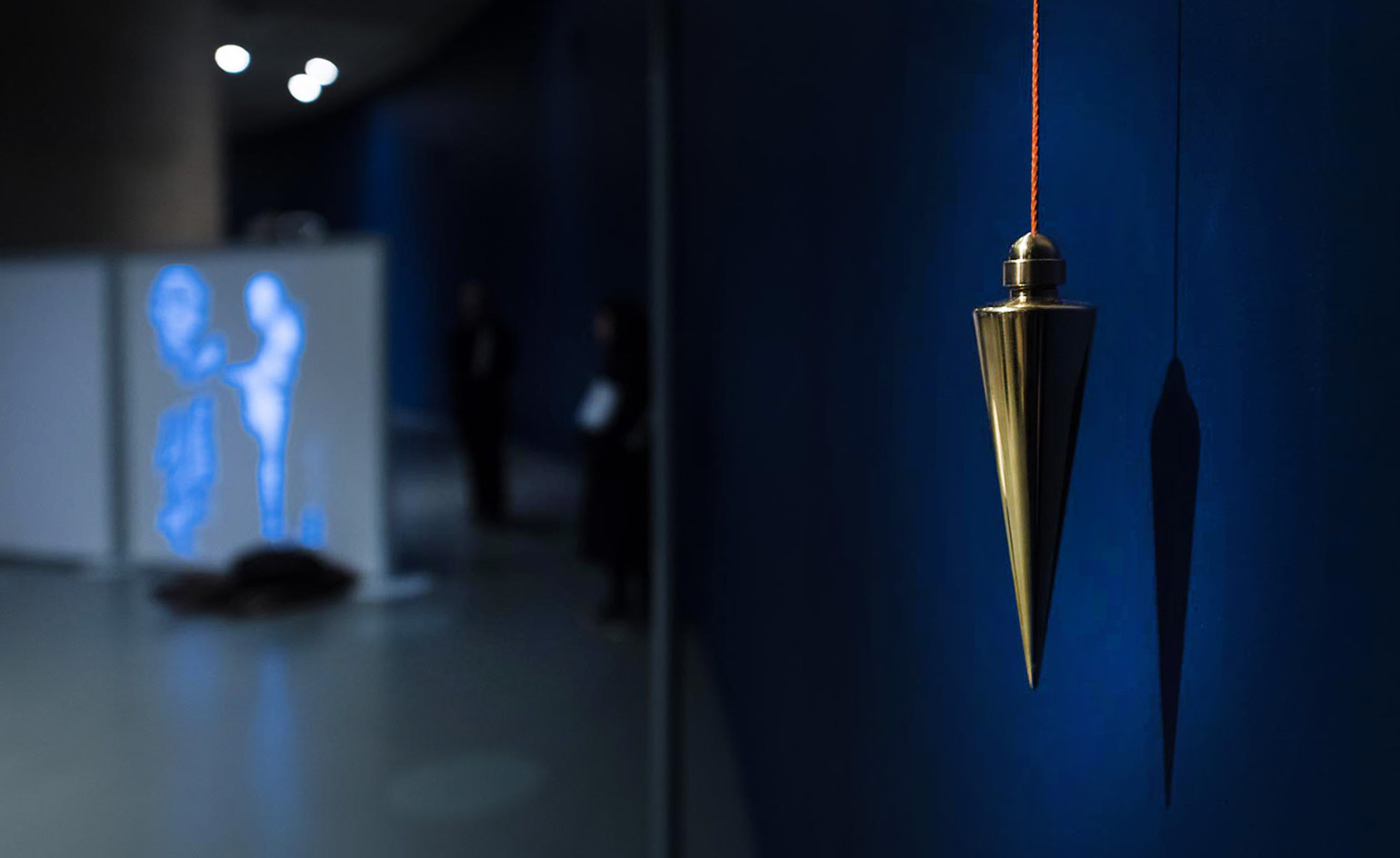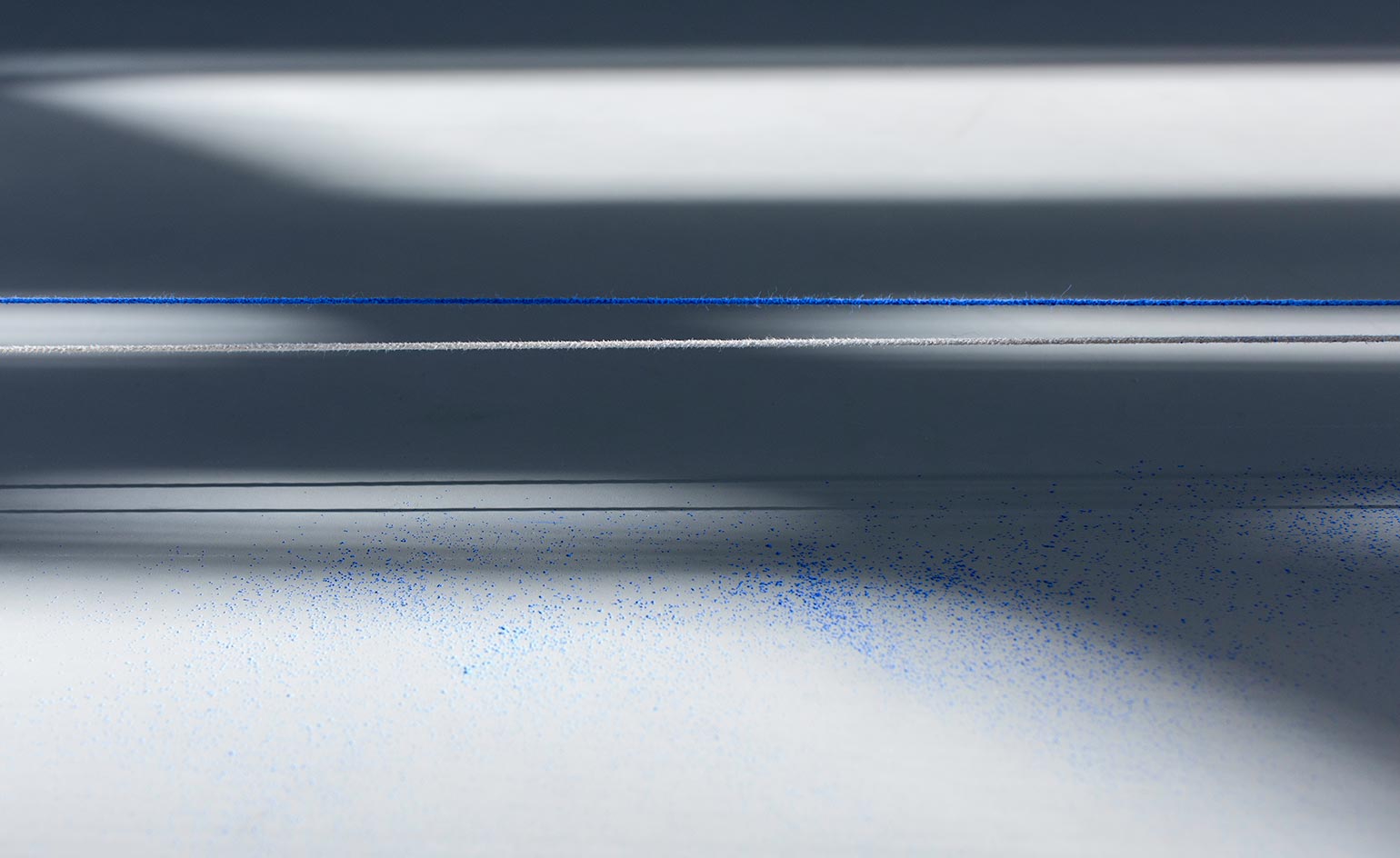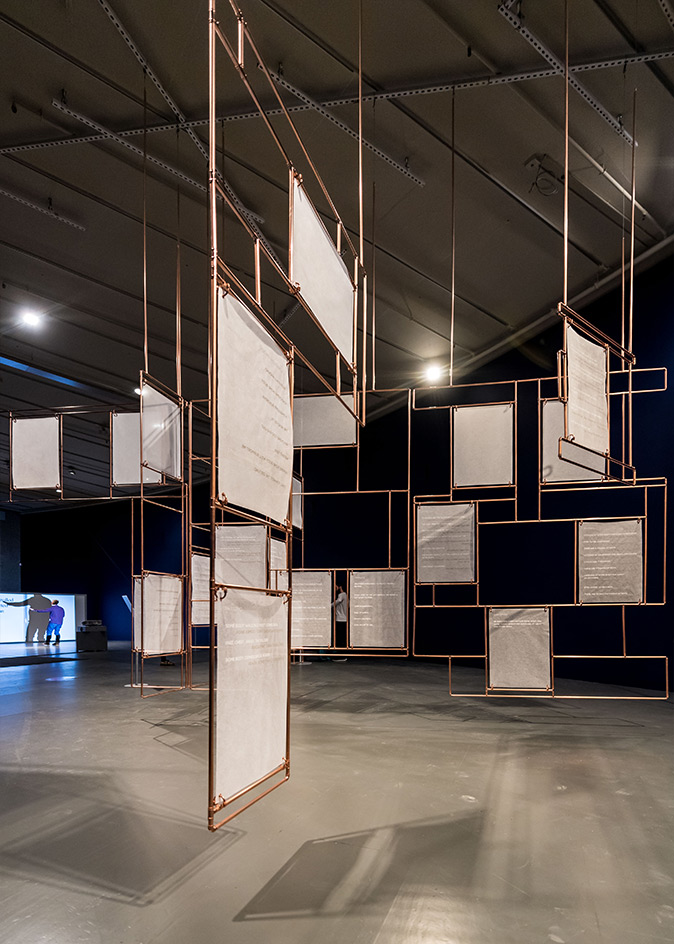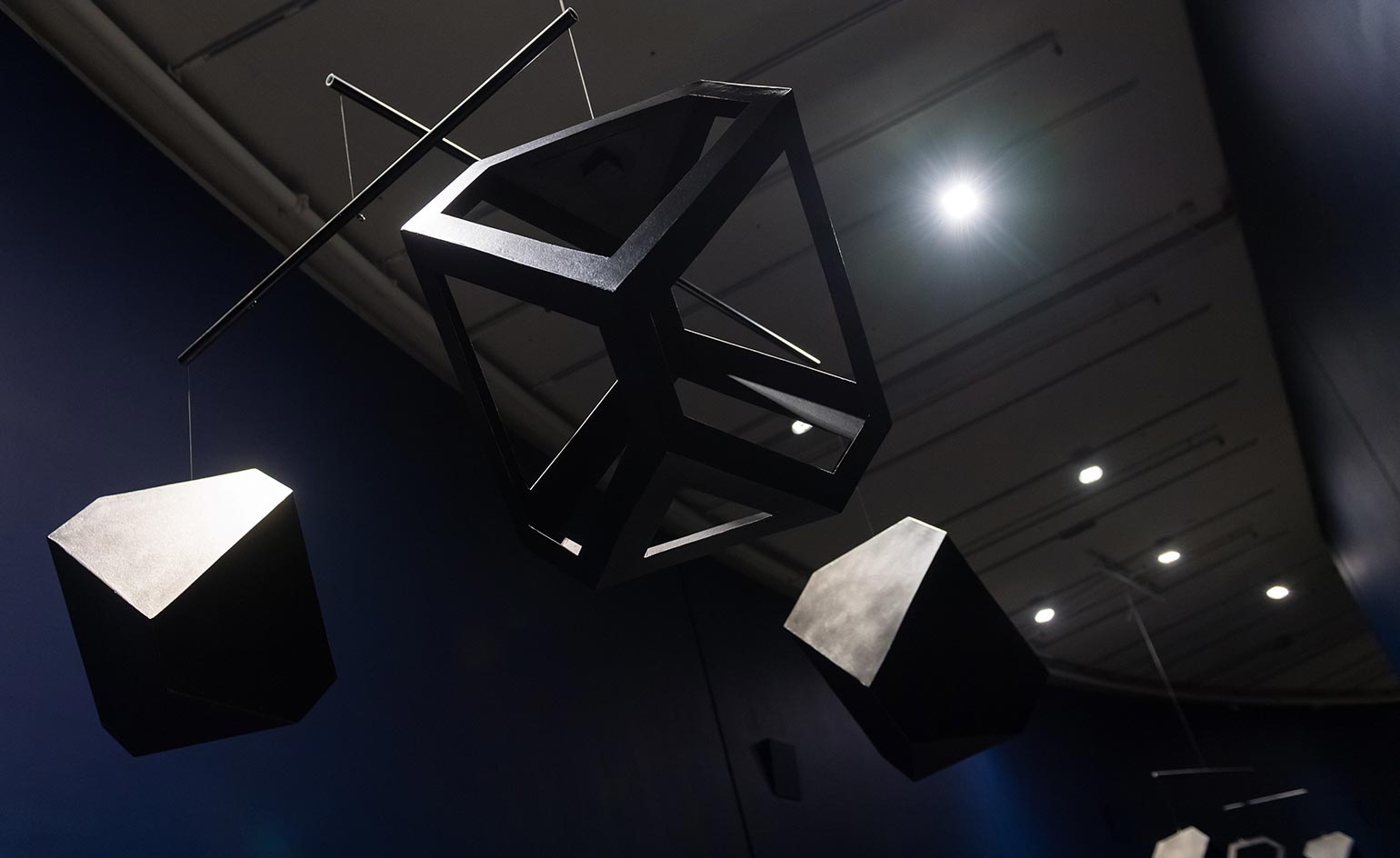Design and dance collide in a new performance installation at the Barbican Centre

Aby Warburg's art theory epic Mnemosyne Atlas isn't the top of most people's reading list. Thankfully, it was at the top of artist Jeremy Millar's. When he mentioned it to choreographer Siobhan Davies, she revisited the Atlas' colourful pages, and was moved to use them as the basis for her latest performance.
Held in The Curve gallery, which arches around the Barbican Centre's ground floor, the exhibition draws on Warburg's practise of collecting symbolic images from different times and places, discovering hidden connections between them. Davies applies this idea by linking the work of an eclectic bunch of contemporary artists and performers, including Millar, conceptual artist Efrosini Protopapa, and London-based design duo Glithero. The performance is an extension of Davies' contribution to Doug Aitkin's epic 'Station-to-Station: A 30-Day Happening' which took place at the Barbican in the summer of 2015.

Siobhan Davies Dance material rearranged for the Barbican's Curve gallery.
Davies was keen to discover how a group of artists could interact within the same space. 'This is why I wanted artists of different disciplines to work together,' she explains. 'I wanted us to inhabit a gallery, making choices, while allowing the audience to make their own choices too.'
Indeed, the audience can move and interact in whichever way they please - in shoulder-brushing proximity to the dancers. Dressed in everyday clothes, the dancers blend into the audience, before slipping into abstract flourishes of movement. They manoeuvrer between screens and movable walls, upon which a live-stream of films and photographs of the dancers are projected. These screens serve to divide the curved gallery, making the audience curious to see what's happening concurrently, just around the corner.

Installation view of ’Datum’, by Glithero, 2017.
Tim Simpson and Sarah van Gameren of Glithero open and close the show with their 'plumb bobs' - created specifically for the installation. These weighted, tapered silver ornaments are suspended from the ceiling by string, causing a pendulum-like focal point for the dancers to work around, enhanced by a moody, metronomic backing track. Davies explains how keen she was to have the duo on board. 'They're an extraordinary pair,' she says. 'They see dancing as drawing.'
But here they decided to take it one step further still. They said, 'why not literally make a mark in the space?' In response to this, Davies and her dance partner delicately skirt across the gallery's curved wall, tracing a parabolic line of chalk on the floor as they go. Although you don't realise it until the end, the two pendulums are being visually linked by this dusty line. The result is intriguingly therapeutic.

’Datum’, by Glithero, 2017.
In an age when we're seeing a lift in the quality of design-dance collaborations (think Wayne McGregor, OMA and Rick Guest) Glithero's intimate partnership with Davies provides a unique perspective on the way performance and design can merge. When Davies was asked why she thought contemporary design was becoming increasingly integrated with dance, she replied, 'Why ever not?'
Receive our daily digest of inspiration, escapism and design stories from around the world direct to your inbox.

The dance company has rearranged material especially for The Curve gallery. In one performance, dancers trace a parabolic line of chalk on the floor as they move through the space

Installation view of I+I Variations on Alteroception, by Emma Smith, 2017.

Detail of I+I Variations on Alteroception, by Emma Smith, 2017.

Disputatio II, by Efrosini Protopapa

Installation view of Melancholy Mobiles, by Jeremy Millar
INFORMATION
’material / rearranged / to / be’ is on view until 28 January. For more information, visit the Barbican website
ADDRESS
The Curve
Barbican Centre
Silk Street
London EC2Y 8DS
Elly Parsons is the Digital Editor of Wallpaper*, where she oversees Wallpaper.com and its social platforms. She has been with the brand since 2015 in various roles, spending time as digital writer – specialising in art, technology and contemporary culture – and as deputy digital editor. She was shortlisted for a PPA Award in 2017, has written extensively for many publications, and has contributed to three books. She is a guest lecturer in digital journalism at Goldsmiths University, London, where she also holds a masters degree in creative writing. Now, her main areas of expertise include content strategy, audience engagement, and social media.
-
 The Bombardier Global 8000 flies faster and higher to make the most of your time in the air
The Bombardier Global 8000 flies faster and higher to make the most of your time in the airA wellness machine with wings: Bombardier’s new Global 8000 isn’t quite a spa in the sky, but the Canadian manufacturer reckons its flagship business jet will give your health a boost
-
 A former fisherman’s cottage in Brittany is transformed by a new timber extension
A former fisherman’s cottage in Brittany is transformed by a new timber extensionParis-based architects A-platz have woven new elements into the stone fabric of this traditional Breton cottage
-
 New York's members-only boom shows no sign of stopping – and it's about to get even more niche
New York's members-only boom shows no sign of stopping – and it's about to get even more nicheFrom bathing clubs to listening bars, gatekeeping is back in a big way. Here's what's driving the wave of exclusivity
-
 Out of office: The Wallpaper* editors’ picks of the week
Out of office: The Wallpaper* editors’ picks of the week'Tis the season for eating and drinking, and the Wallpaper* team embraced it wholeheartedly this week. Elsewhere: the best spot in Milan for clothing repairs and outdoor swimming in December
-
 Out of office: The Wallpaper* editors’ picks of the week
Out of office: The Wallpaper* editors’ picks of the weekFar from slowing down for the festive season, the Wallpaper* team is in full swing, hopping from events to openings this week. Sometimes work can feel like play – and we also had time for some festive cocktails and cinematic releases
-
 The Barbican is undergoing a huge revamp. Here’s what we know
The Barbican is undergoing a huge revamp. Here’s what we knowThe Barbican Centre is set to close in June 2028 for a year as part of a huge restoration plan to future-proof the brutalist Grade II-listed site
-
 Out of office: The Wallpaper* editors’ picks of the week
Out of office: The Wallpaper* editors’ picks of the weekIt’s wet, windy and wintry and, this week, the Wallpaper* team craved moments of escape. We found it in memories of the Mediterranean, flavours of Mexico, and immersions in the worlds of music and art
-
 Each mundane object tells a story at Pace’s tribute to the everyday
Each mundane object tells a story at Pace’s tribute to the everydayIn a group exhibition, ‘Monument to the Unimportant’, artists give the seemingly insignificant – from discarded clothes to weeds in cracks – a longer look
-
 Out of office: The Wallpaper* editors’ picks of the week
Out of office: The Wallpaper* editors’ picks of the weekThis week, the Wallpaper* team had its finger on the pulse of architecture, interiors and fashion – while also scooping the latest on the Radiohead reunion and London’s buzziest pizza
-
 Out of office: The Wallpaper* editors’ picks of the week
Out of office: The Wallpaper* editors’ picks of the weekIt’s been a week of escapism: daydreams of Ghana sparked by lively local projects, glimpses of Tokyo on nostalgic film rolls, and a charming foray into the heart of Christmas as the festive season kicks off in earnest
-
 Wes Anderson at the Design Museum celebrates an obsessive attention to detail
Wes Anderson at the Design Museum celebrates an obsessive attention to detail‘Wes Anderson: The Archives’ pays tribute to the American film director’s career – expect props and puppets aplenty in this comprehensive London retrospective